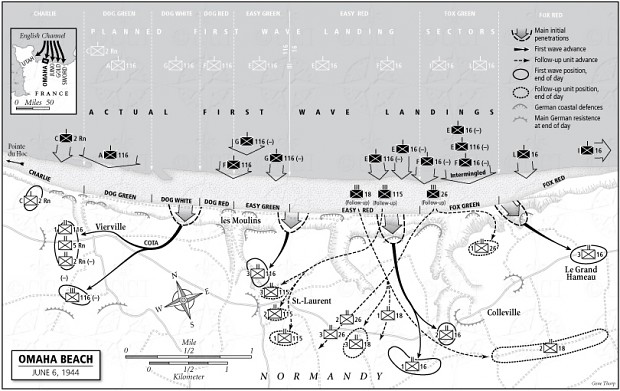wolff69
jonathan joined
A Company of Heroes PC game total conversion modification,which expands the player experience to create a battalion scale tactical combat simulation called Enhanced Combat Leader: Beyond Overlord because it uses Relic Entertainments Essence physics Engine to create a vivrant 3D RTS game with dynamic new play mechanics.
Omaha Beach, commonly known as Omaha, was the code name for one of the five sectors of the Allied invasion of German-occupied France in the Normandy landings on 6 June 1944, during World War II. Omaha is located on the coast of Normandy, France, facing the English Channel, and is 5 miles (8 km) long, from east of Sainte-Honorine-des-Pertes to west of Vierville-sur-Mer on the right bank of the Douve River estuary. Landings here were necessary in order to link up the British landings to the east at Gold with the American landing to the west at Utah, thus providing a continuous lodgement on the Normandy coast of the Bay of the Seine. Taking Omaha was to be the responsibility of United States Army troops, with sea transport and naval artillery support provided by the U.S. Navy and elements of the British Royal Navy.
On D-Day, the untested 29th Infantry Division, joined by the veteran 1st Infantry Division and nine companies of U.S. Army Rangers redirected from Pointe du Hoc, were to assault the western half of the beach. The battle-hardened 1st Infantry Division was given the eastern half. The initial assault waves, consisting of tanks, infantry, and combat engineer forces, were carefully planned to reduce the coastal defenses and allow the larger ships of the follow-up waves to land.
The primary objective at Omaha was to secure a beachhead of some five miles (eight kilometres) depth, between Port-en-Bessin and the Vire River, linking with the British landings at Gold to the east, and reaching the area of Isigny to the west to link up with VII Corps landing at Utah. Opposing the landings was the German 352nd Infantry Division, a large portion of whom were teenagers, though they were supplemented by veterans who had fought on the Eastern Front. The 352nd had never had any battalion or regimental training. Of the 12,020 men of the division, only 6,800 were experienced combat troops, detailed to defend a 53-kilometre-long (33-mile) front.






